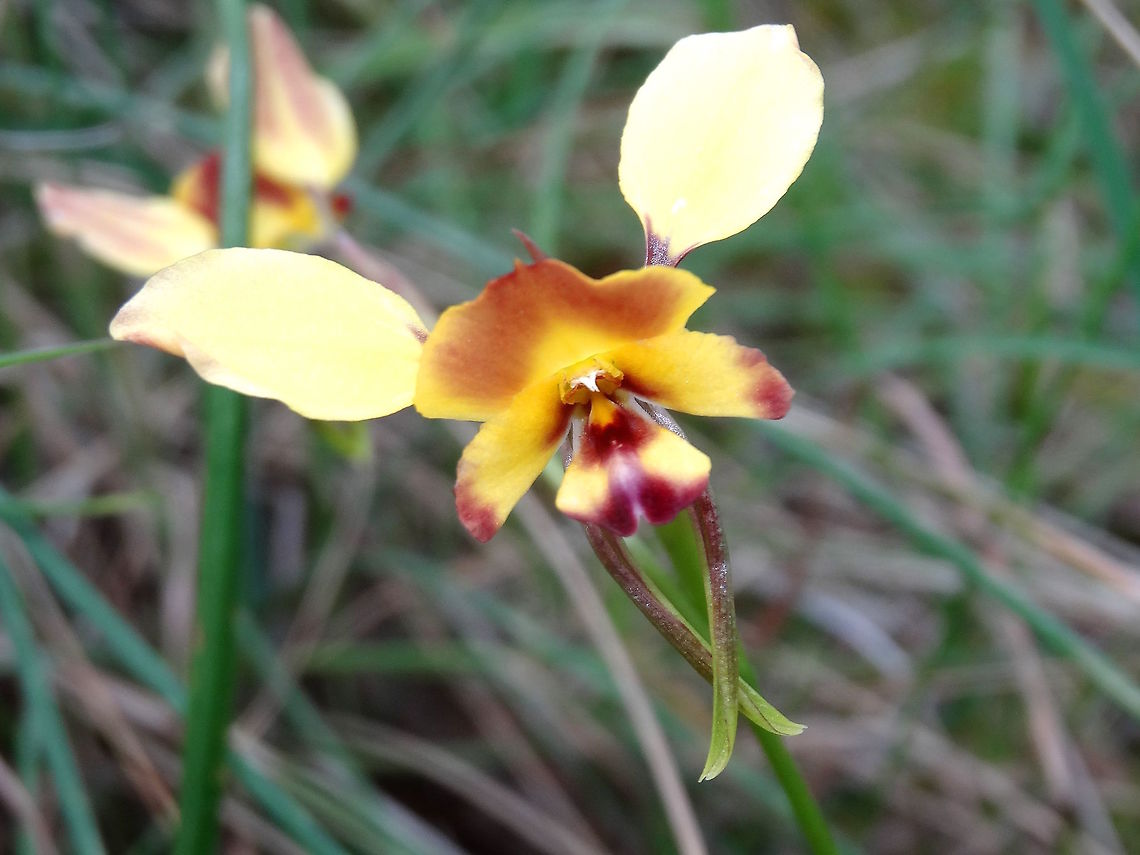
Eastern Wallflower orchid (Diuris orientis)
On a fine straight stem about 30cm tall. Not sure if the white marks on the second one are damage.
Found in a dry sclerophyll forest dominated by silver leafed stringybark eucalyptus. Baluk William Flora Reserve.
Attracts native bees.
No species identified
The species on this photo is not identified yet. When signed in, you can identify species on photos that you uploaded. If you have earned the social image editing capability, you can also identify species on photos uploaded by others.
By Mark Ridgway
All rights reserved
Uploaded Mar 26, 2016. Captured Oct 16, 2012 01:05 in 95-101 Courtneys Rd, Belgrave South VIC 3160, Australia.

comments (2)
http://plantnet.rbgsyd.nsw.gov.au/cgi-bin/NSWfl.pl?page=nswfl&lvl=sp&name=Diuris~orientis
http://orchids.rnr.id.au/Diuris2/
According to others they are separate species
http://bie.ala.org.au/species/Diuris+orientis#tab_names
http://bie.ala.org.au/species/urn:lsid:biodiversity.org.au:apni.taxon:96222#tab_names
Are they separate species and what is the difference between them?
There are more photos here
http://www.jungledragon.com/specie/2408/photos Posted 9 years ago
Diuris corymbosa , syn. Diuris longifolia var. corymbosa, is a common species that grows in sand, granite and gravel in open forests, woodlands, and shrubland in winter wet areas of Western Australia. It has yellow flowers with reddish-brown markings and suffusions. This species is known as the Donkey orchid and is smaller than Diuris orientis from eastern Australia.
http://pacificbulbsociety.org/pbswiki/index.php/Diuris
Although it seems that this is only predominently, but not exclusively...
http://bie.ala.org.au/species/Diuris+corymbosa
http://bie.ala.org.au/species/Diuris+orientis
http://anpsa.org.au/d-cor.html Posted 9 years ago, modified 9 years ago